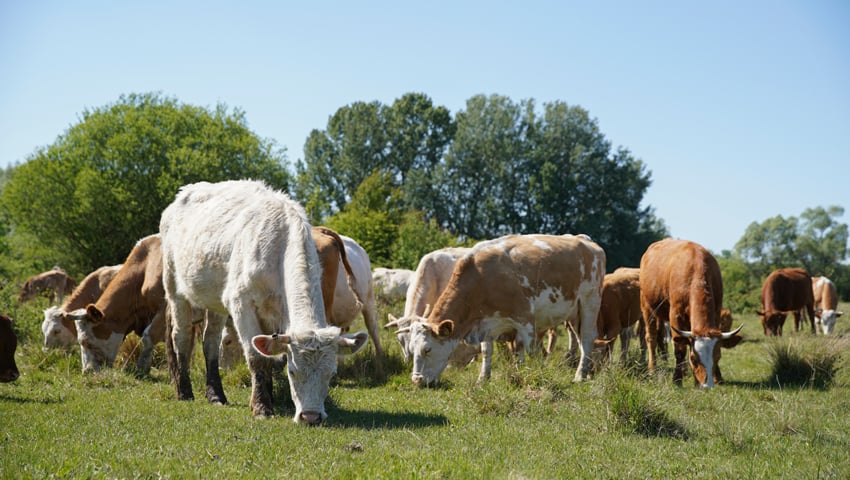Research has found that five adaptive multi-paddock sites had on average 13% more soil carbon and 9% more soil nitrogen compared to “over-the-fence” conventionally grazed sites.
Grassland soils are a large reservoir of soil carbon at risk of loss due to overgrazing in conventional grazing systems. By promoting regenerative grazing management practices that aim to increase soil carbon storage and soil health, grasslands have the potential to help alleviate rising atmospheric CO2 as well as sustain grass productivity across a vast area of land.
Previous research has shown that rotational grazing, specifically adaptive multi-paddock (AMP) grazing that utilizes short-duration rotational grazing at high stocking densities, can increase soil carbon stocks in grassland ecosystems, but the extent and mechanisms are unknown.
The Carbon Cowboys research team, Mosier et al. (2021), conducted a large-scale on-farm study on five “across-the-fence” pairs of AMP and conventional grazing (CG) grasslands covering a spectrum of southeast United States grazing lands. They quantified soil carbon and nitrogen stocks, their isotopic and Fourier-transform infrared spectroscopy signatures as well as their distribution among soil organic matter (SOM) physical fractions characterized by contrasting mechanisms of formation and persistence in soils.
The findings, published in 2021, show that the AMP grazing sites had on average 13% (i.e., 9 Mg C ha− 1) more soil carbon and 9% (i.e., 1 Mg N ha− 1) more soil nitrogen compared to the conventionally grazed sites over a 1m depth.
Additionally, the stocks’ difference was mostly in the mineral-associated organic matter fraction in the A-horizon, suggesting long-term persistence of soil carbon in AMP grazing farms. The higher nitrogen stocks and lower 15N abundance of AMP soils also point to higher nitrogen retention in these systems.
These findings provide evidence that AMP grazing is a management strategy to sequester carbon in the soil and retain nitrogen in the system, thus contributing to climate change mitigation.
The scientists said that “High care was used to identify comparable soil types between the farms in each pair, and the comparability was tested using soil spectral analyses, so that measured differences could be ascribed to management effects.”
The study was however criticised, McGuire (2021), for the “lack of pre-treatment baseline soil measurements and of surveying soil carbon stock variability within each farm”. Criticism suggested that “no conclusions regarding the grazing management treatment effects on soils nor estimates of effect sizes could be made”.
The Carbon Cowboys team responded that “While baseline measurements would be ideal and enable assessment of rate of soil organic carbon accrual within a management treatment, they have been rarely available on farms until now. Given the recent rise in interest for soil organic carbon farming, farms have started to be broadly sampled, soon enabling future resampling. Therefore, until now, space for time research methods that substitute for baseline measurements have been widely applied and many studies published results using this experimental approach.
“The study objectives did not need pre-treatment baseline measurements since we never claimed to determine stock changes within a farm over time. Similarly, while the study did not aim, claim, or need to quantify soil carbon stock variability within a farm, it used a fully replicated design at regional scale.”
The conclude that “the criticisms by McGuire regarding lack of pre-treatment baseline data are not pertinent and indicate a lack of understanding of the study design and objective.”
